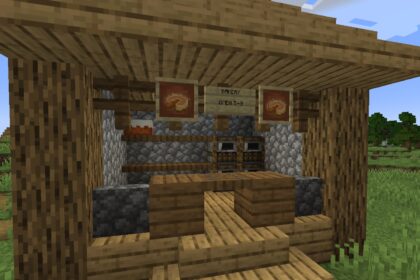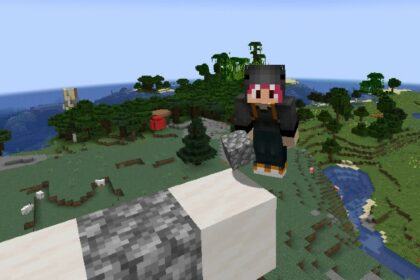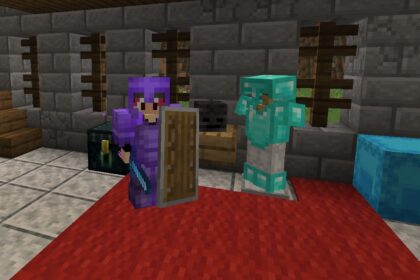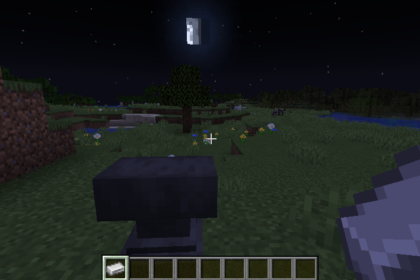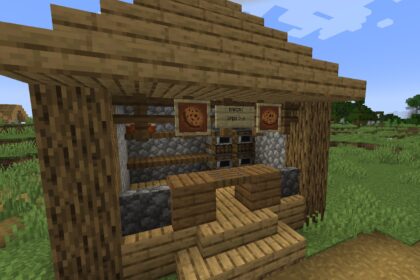Increasing Minecraft’s tick speed can result in faster gameplay, affect crop growth, mob repopulation, and the game’s progression in general.
Although the game’s typical pace is reasonable, some players prefer shorter day cycles to get things done quicker. Therefore, increasing tick speed is a solution for people who want a fast-paced gaming experience in Minecraft.
The concept of ticks in games may be unclear to some. So, let’s discuss its meaning and how to increase tick speed in Minecraft.
What is Tick Speed?
Every game has a concept that developers call “loop”, which is the notion that the game progresses at a specific pace. So, each loop represents a value in ticks.
Consequently, in this sense, if you interfere with the number of ticks a game holds, you’ll affect progression.
For example, assume a game has a rate of thirty ticks per second and its average in-game day lasts 10 minutes. In this case, the game will hold 18000 ticks per day.
Tick Speed in Minecraft
In Minecraft, the amount of ticks a day has is 24000. So, it’s safe to say that the game’s day lasts for 20 minutes and each second rolls twenty ticks. But, of course, if the user’s computer can’t perform ideally, the number of ticks can diminish.
Consequently, a low-performance computer will take longer to complete in-game progressing activities, such as growing crops.
Moreover, certain features in Minecraft can produce extra lag for their demand of processing power from the computer. Let’s go through some in-game aspects that can impact tick speed.
- Redstone Machinery: The components, dust, and operative commands of redstone mechanisms cause constant block updates, which can result in lag. So, make sure to turn any unnecessary redstone machinery off.
- Hoppers: Minecraft hoppers are constantly searching for items to make their mechanism work. However, by doing so, they generate a bit of lag. So, one can avoid this by placing a block or composter to cover the machine, making them inactive.
- High Mob Flow: An exaggerated number of mobs in the surrounding areas will cause lag. One can avoid this by placing torches around a specific location to avoid enemies spawning. In addition, building organized farms also avoids overpopulation lag.

In addition to the lag causes above, increasing loaded chunks in the game world can impact Minecraft’s tick speed.
To check the current Minecraft’s ticks per second value while playing, press F3. However, only the server’s host can see those stats in multiplayer sessions.

Now, there are different resources that ticks have an impact upon in Minecraft. Let’s get a brief overview of them.
Chunk Tick
Chunks start to load their ticks when the center of their area is at a horizontal distance of 128 blocks from the player. Additionally, every chunk below this distance also begins ticking. During chunk ticks across the map, a few things occur, they are:
- Mob spawning
- Lightining striking
- Water freezes
- Snow generates snowpack
- Rainy and snowy weather can fill cauldrons
- Fire can spread
- Ice and snow can melt
- Vegetation in general may spread or decay.
- Plantation hydrates
- Redstone mechanisms will work
Random Ticks
The “random tick speed” is a similar but more individual concept concerning ticks in Minecraft. For instance, it defines how many blocks within each subchunk will get updated for every tick.
So, since Minecraft’s ticks per second value sits at twenty, we can conclude that setting the random tick value to four will load this amount of blocks twenty times each second.
Consequently, the final number is 80 undefined blocks per second.

The blocks are undefined because the random tick property works arbitrarily without selecting specifics. Nevertheless, if you set the value of a thousand, all blocks on the chunk will eminently progress after a few seconds.
The ticking property also acts on scheduled blocks and fluids. Moreover, Redstone elements have unique tick values, which vary depending on the mechanism.
Yet, how to change this Minecraft parameter and adjust the day-night cycle in the game? Let’s discuss it a bit further.
Changing Tick Values
To set specific tick values in Minecraft, one can use some in-game text chat commands. However, the player who will work these methods must be the host of the game world.
Also, it’s essential to understand that the only in-game command which enables tick value changes in Minecraft operates towards random ticks. So, you can’t specify which blocks will feature a shift in cycle progression.
To alter the topic property, the world admin must enter the following text command in the game chat: “/gamerule randomTickSpeed [number]”.

By typing this command, the game will operate directly on the random tick speed value, without the need for mods or accessing the program’s internal files. However, the game world must have cheats enabled.
Additionally, in the “[number]” segment, you’ll type precisely the amount of random blocks to work per tick. So, for instance, if you put 5, it’ll progress significantly slower than if you’d type 1000.
Now, let’s explore some justified reasons why players can benefit from changing the game’s tick speed.
Benefits of Changing Minecraft Tick Speed
Changing the game’s tick speed is an entirely reasonable action if you’re running a fast-paced multiplayer server. Most Minecraft online servers have a specific tick progression to ensure all players evolve and gather resources at a conventional rate in multiplayer gameplay.
Multiplayer and single-player progression are highly distinct, with slow-paced endeavors being better adequate on solo modes.
In addition, a few more reasons as to why altering the tick speed can be beneficial, both on single and multiplayer gameplay, include:
- Faster crops and vegetation growth.
- Faster ice creation.
- Faster deforestation (by using fire to spread quickly).
- Faster animal growth, such as turtle eggs.
- Faster material processing, such as minerals in furnances.


